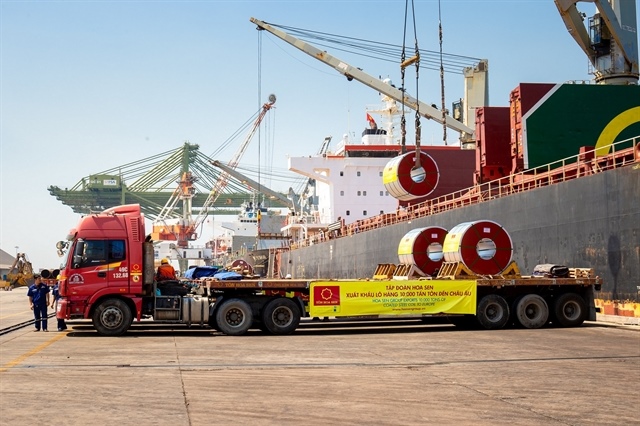Vietnam Airlines (HVN) posts 20% revenue growth in Jan-June, driven by strong international travel
Vietnam Airlines (HVN) posts 20% revenue growth in Jan-June, driven by strong international travel
Vietnam Airlines alone carried nearly 11.5 million international passengers and 143,000 tons of freight and parcels in the six-month period, up 10% and 42% respectively year-on-year.
The national flag carrier, Vietnam Airlines, reported a one-fifth year-on-year increase in consolidated revenue to more than VND53 trillion ($2.1 billion) in the first half of the year. Pre-tax profit reached VND5.6 trillion ($224 million) in the January-June period. In H1/2023, Vietnam Airlines posted a loss of VND1.3 trillion ($51.5 million).

The addition of the Boeing 787-10 brings Vietnam Airlines' wide-body fleet to 30 aircraft. Photo: Vietnam Airlines |
Soaring international passenger numbers have boosted Vietnam Airlines' financial performance in the first half of the year. From January to June, Vietnam's aviation sector carried nearly 20 million international passengers, up 42% year-on-year and approaching pre-pandemic levels.
Vietnam Airlines alone carried nearly 11.5 million international passengers and 143,000 tons of freight and parcels in the six-month period, up 10% and 42% respectively year-on-year.
The airline has launched new routes connecting Vietnamese cities to overseas destinations such as Manila (Philippines) and Chengdu (Sichuan Province, China), and upgraded its fleet on routes to India, China and Singapore.
In Vietnam, the company increased the frequency of night flights and offered promotions to encourage domestic travel. In addition, Vietnam Airlines has improved service quality and introduced customer-centric digital solutions.
The company's strong performance in H1 was also aided by a debt write-off of more than VND4.6 trillion ($182.4 million) and measures taken to overhaul its financial structure. Major difficulties faced by the aviation business included high fuel prices, unfavorable exchange rates, low seasonality, and a global engine recall resulting in a shortage of aircraft.
In the second half of 2024, Vietnam Airlines expects challenges to persist, including high fuel prices, unfavorable exchange rate fluctuations, soaring aircraft leasing costs, and declining domestic fleet resources.
The airline also foresees potential new developments affecting its operations, such as the outcome of the US elections affecting global dynamics, escalating conflicts in Europe and the Middle East, and intensifying international competition as foreign airlines expand their services to Vietnam.



























